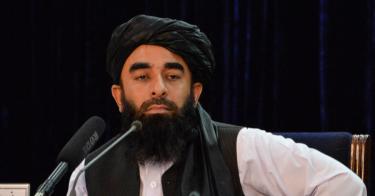With the 20th anniversary of 9/11 almost here, I’m hoping someone in the Biden administration is giving some deep thought to the counterterrorism challenges we’ll likely face after the United States withdraws from Afghanistan.
Our invasion, after all, was meant to prevent another 9/11.
Unfortunately, under Taliban control or in areas outside Taliban control, Afghanistan could—once again—become a safe haven for terrorist groups and a veritable petri dish for hatching deadly international terror plots.
There’s a very good chance that we’d be in the terrorists’ bullseye.
Though the Taliban wants the world beyond Afghanistan to believe it has changed its medieval ways, it has long been affiliated with several terrorist groups, including al-Qaeda and the Haqqani network.
These terror ties will almost certainly continue under the new Taliban regime. These groups have fought for years with the Taliban against the Afghan government and its partners, including the U.S.
The Taliban will need these terror groups to try to control the cities and the countryside, which the Taliban may struggle to stabilize and rule in the wake of the fall of Kabul and the provincial governments.
The Taliban may also face internal resistance from powerful Afghan warlords, Islamic State Khorasan (or IS-K, the South/Central Asia affiliate of ISIS), newly established Afghan resistance groups, or foreign covert special operations that may work to undermine its rule.
In return for their service and friendship, these terror groups, especially al-Qaeda, will want protected places from which they can freely plan, train, and operate. The Taliban’s Afghanistan may become just the place for that.
While the Taliban may be satisfied with trying to turn Afghanistan back to the seventh century, al-Qaeda will almost certainly look to reinvigorate itself by targeting the West, especially the United States and Europe.
IS-Khorasan, a rival of the Taliban in Afghanistan, will not only look to overthrow the Taliban, creating the next Islamic State caliphate, but also carve out some turf for itself in Afghanistan’s ungoverned spaces.
These terror groups and others will trumpet the U.S. withdrawal as a propaganda victory for radical Islam, possibly energizing violent extremism across the globe. We should expect a flow of foreigners to the “Islamic Emirate of Afghanistan.”
Remember the migration of large numbers of foreigners from across the globe to Iraq and Syria that supported the establishment of the ISIS caliphate and gave it the world’s richest and largest terrorist army not too long ago?
We don’t want to return to those days.
Even with our incredible, high-tech intelligence capabilities, our withdrawal from Afghanistan and the collapse of the Afghan government will frustrate our ability to track the bad guys in that country.
The lack of “eyes and ears” on the ground could lead to trouble.
As such, when the chaos in Kabul ends, President Joe Biden needs to—as soon as possible—tell the American people how he will keep them safe from the international terrorism that may very well launch from Afghanistan.
This piece originally appeared in The Daily Signal



